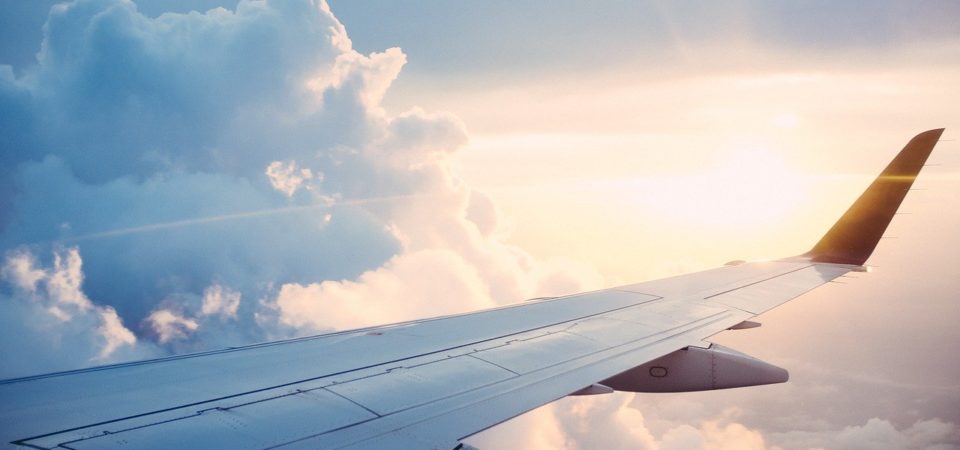With such a focus on becoming a sustainable planet and combating the problems that global warming is bringing to the world, many people and experts are asking, will it ever be possible for air travel to become a green industry? As one of the sectors with the most increasing levels of carbon emissions, it’s definitely a talking point.
But how feasible is it, and will it ever be enforced? Today, we’re going to zero in on several key points to help give you an idea of where the industry is now so you can make up your mind!
Is It Really That Bad?
Currently, studies are showing that around 2% of all global emissions come from the air travel industry. While this may not sound like a lot, when you add in all the vehicles used in the air travel industry (not just planes), and the transport people use getting to airports, and other sources of emissions, the true figure sits around the 5% mark. Again, 5% might not seem like a lot. Still, when you consider the fact many industries and markets in the world are extremely proactive in making real changes to their processes, this has placed the air travel industry as one of the largest and most growing contributors.
The problem is compounded by the sheer demand for air travel – there are many people who have to travel in the fast, inexpensive long-distance way that is air travel. Global airline passenger numbers were equal to 50% of the world’s population in 2018, according to the International Air Transport Association. This number is likely already significantly larger, and still growing.
Due to this increasing demand, more flights are scheduled, more airplanes are bought and further investment in air travel, in general, continues to occur. Not only is airplane fuel combustion toxic to the environment by itself, depleting the ozone layer, but this increasing demand also compounds the issue and greatly accelerates climate change.
No Real Alternatives
Flying has become the norm in countries all over the world because it’s now a habit to simply book a flight and jet off somewhere, but there are no real alternatives available for people that are equally as convenient. This means that you can’t simply cut down on the number of planes available, and the general public will need to be worked with to find alternative methods of transport.
Moving Away from Fuel
Of course, one of the most talked-about suggestions is why not do what cars are doing and move away from emission-creating fuel and instead use electrical systems. This would be the most effective change. While this would be great, the technology simply isn’t here right now, and would only currently be possible when being used on smaller planes.
There’s no denying that every little helps and transforming small planes would start to make a difference, but the technology simply isn’t there, at least to make it financially stable for companies and airline providers. However, things like batteries and motors are on their way. Watch this space.
Alternative Fuels are Expensive
We all know about the budget airlines that offer ridiculously cheap and affordable flights that leave us wondering how they do it, but this is one of the key reasons why changing to alternatives is so difficult. There is such a thing known as biofuel planes, but the fuel for these planes is very expensive, and wouldn’t at all be suitable to most budget flyers, nor even premium flyers. Of course, taxes on fuels may change this situation, but at the time of writing, this is not the case.
Would You Be Happy to Pay More?
As it stands, the best way to cut emissions would be to raise the price of flights. This way, airline providers could start investing in new planes or upgrades that are eco-friendlier, and people who don’t have the money would then stop flying, but rather use more affordable, more eco-friendly modes of transport. However, when you consider how many people rely on planes, it’s safe to say the change wouldn’t be so easy. When you apply this to a worldwide scale as well, the opportunity to change almost seems impossible.
What About Building New Greener Planes?
The design of existing airplanes can perhaps be modified to have slightly more efficiently-shaped wings and bodies, with negligibly lighter materials, but not to the extent that it justifies building a new plant for producing them. Existing planes are almost as efficiently designed as they can be.
What About Improving What We’ve Got?
There is another solution. Some experts have suggested that instead of overhauling the existing airline structure completely, why not just try and make it more efficient, and in fact, this is what a lot of aviation companies are doing already and what has been happening for decades. As technology improves, so could this efficiency.
Conclusion
As you can see, there is a lot to think about when it comes to turning the airline sector green and sustainable, and only with pressure and action will real change take place. In the meantime, consider your own air miles and see what you can do to help when it comes to traveling greener.
Ellie Coverdale, a technical writer at Australianhelp and OXessays, shares information on activism while trying to make the world a better place. She’s interested in how businesses can also change their practices to become more sustainable. She also teaches writing skills for Bigassignments in her free time.
The MAHB Blog is a venture of the Millennium Alliance for Humanity and the Biosphere. Questions should be directed to joan@mahbonline.org
The views and opinions expressed through the MAHB Website are those of the contributing authors and do not necessarily reflect an official position of the MAHB. The MAHB aims to share a range of perspectives and welcomes the discussions that they prompt.

